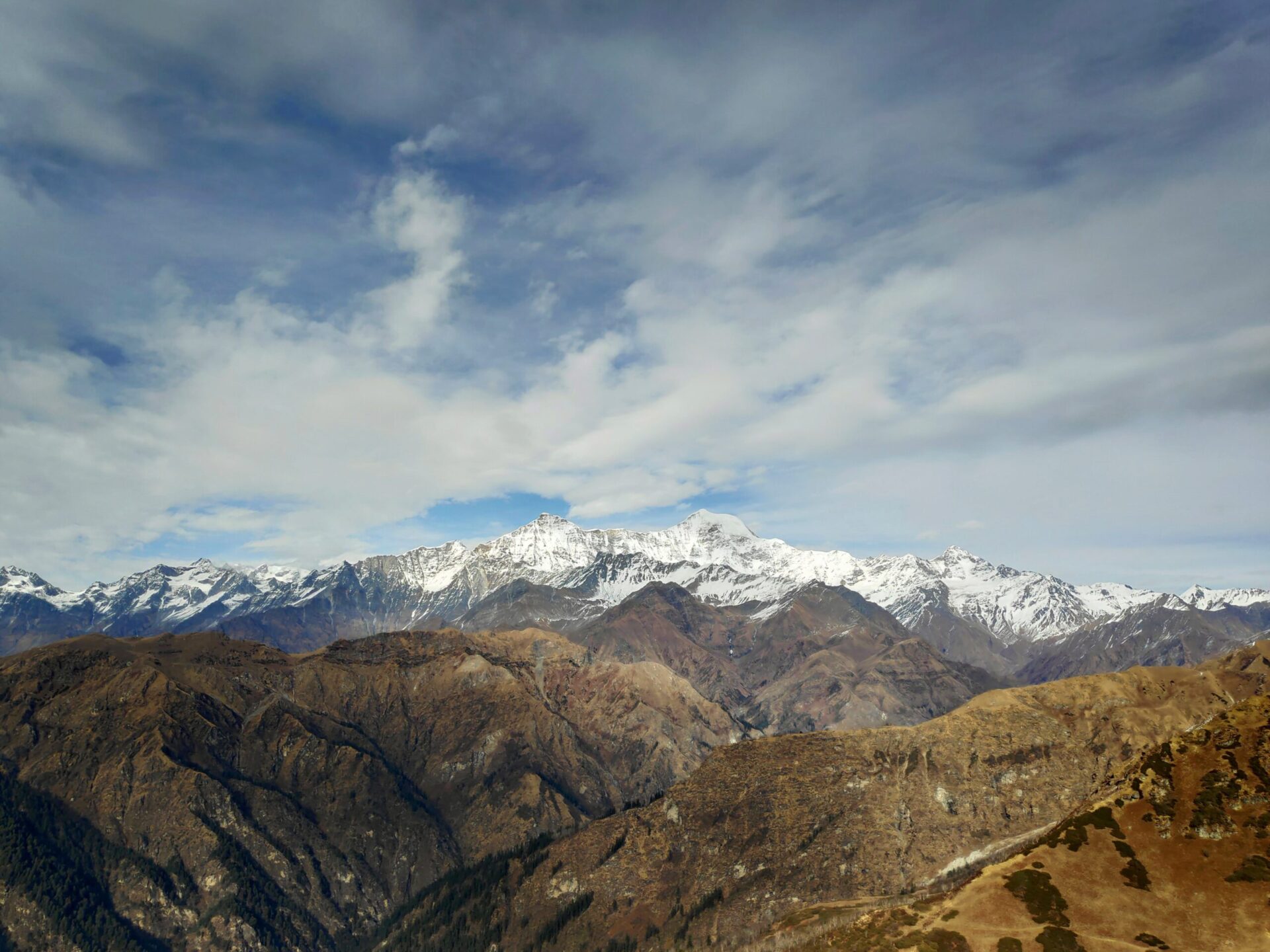IPCC Special Report on Ocean and Cryosphere – High Mountain Areas

Introduction
The cryosphere (including snow, glaciers, permafrost, lake and river ice) is an integral element of high-mountain regions, which are home to roughly 10% of the global population. Widespread changes in the cryosphere affect physical, biological and human systems in the mountains and surrounding lowlands, with impacts evident even in the ocean.
This chapter*, from the IPCC Special Report onthe Ocean and Cryosphere in a Changing Climate assesses recent and projected changes in glaciers, snow cover, permafrost and lake and river ice in high-mountain areas, their drivers, as well as their impact on the different services provided by the cryosphere and related adaptation, with a focus on literature published after the IPCC Fifth Assessment Report (AR5). It includes sections on:
- Changes in the Mountain Cryosphere,
- Mountain Social-Ecological Systems: Impacts, Risks and Human Responses,
- International Policy Frameworks and Pathways to Sustainable Development,
- Key Gaps in Knowledge and Prospects, and
- Additional Information on Global and Regional Glacier Mass Change Estimates for 2006–2015
*Download the full chapter from the right-hand column. Read the Executive Summary here. The key messages from the publication are provided below. See the full text for much more detail. Access the full IPCC Special Report on the Ocean and Cryosphere in a Changing Climate for additional chapters on the polar regions, sea level rise, changing oceans and marine systems, abrupt changes and managing risks, and low lying islands and coasts.
Observations of cryospheric changes, impacts, and adaptation in high mountain areas
Observations show general decline in low-elevation snow cover (high confidence), glaciers (very high confidence) and permafrost (high confidence) due to climate change in recent decades.
Glacier, snow and permafrost decline has altered the frequency, magnitude and location of most related natural hazards (high confidence). Exposure of people and infrastructure to natural hazards has increased due to growing population, tourism and development (high confidence).
Changes in snow and glaciers have changed the amount and seasonality of runoff in snow-dominated and glacier-fed river basins (very high confidence) with impacts on agriculture (medium confidence).
Species composition and abundance have markedly changed in high-mountain ecosystems in recent decades (very high confidence), partly due to changes in the cryosphere (high confidence).
Tourism and recreation activities such as skiing, glacier tourism and mountaineering have been negatively impacted by declining snow cover, glaciers and permafrost (medium confidence).
Adaptation in agriculture, tourism and drinking water supply has aimed to reduce the impacts of cryosphere change (medium confidence), though there is limited evidence on their effectiveness owing to a lack of formal evaluations, or technical, financial and institutional barriers to implementation.
Future projections of cryospheric changes, their impacts and risks, and adaptation in high mountain areas
Snow cover, glaciers and permafrost are projected to continue to decline in almost all regions throughout the 21st century (high confidence).
Most types of natural hazards are projected to change in frequency, magnitude and areas affected as the cryosphere continues to decline (medium confidence).
River runoff in snow-dominated and glacier-fed river basins will change further in amount and seasonality in response to projected snow cover and glacier decline (very high confidence) with negative impacts on agriculture, hydropower and water quality in some regions (medium confidence).
Current trends in cryosphere-related changes in high-mountain ecosystems are expected to continue and impacts to intensify (very high confidence).
Cultural assets, such as snow- and ice-covered peaks in many UNESCO World Heritage sites, and tourism and recreation activities, are expected to be negatively affected by future cryospheric change in many regions (high confidence).
Enablers and response options to promote adaptation and sustainable development in high mountain areas
The already committed and unavoidable climate change affecting all cryosphere elements, irrespective of the emission scenario, point to integrated adaptation planning to support and enhance water availability, access, and management (medium confidence).
Effective governance is a key enabler for reducing disaster risk, considering relevant exposure factors such as planning, zoning, and urbanization pressures, as well as vulnerability factors such as poverty, which can challenge efforts towards resilience and sustainable development for communities (medium confidence).
International cooperation, treaties and conventions exist for some mountain regions and transboundary river basins with potential to support adaptation action. However, there is limited evidence on the extent to which impacts and losses arising from changes in the cryosphere are specifically monitored and addressed in these frameworks.
Suggested Citation
Hock, R., G. Rasul, C. Adler, B. Cáceres, S. Gruber, Y. Hirabayashi, M. Jackson, A. Kääb, S. Kang, S. Kutuzov, A. Milner, U. Molau, S. Morin, B. Orlove, and H. Steltzer, 2019: High Mountain Areas. In: IPCC Special Report on the Ocean and Cryosphere in a Changing Climate [H.-O. Pörtner, D.C. Roberts, V. Masson-Delmotte, P. Zhai, M. Tignor, E. Poloczanska, K. Mintenbeck, A. Alegría, M. Nicolai, A. Okem, J. Petzold, B. Rama, N.M. Weyer (eds.)]. Available online: https://www.ipcc.ch/srocc/chapter/chapter-2/
Further Reading
- Climate Change Adaptation in Mountains - Theme
- Adaptation action and research in glaciated mountain systems: Are they enough to meet the challenge of climate change?
- The Hindu Kush Himalaya Assessment: Mountains, Climate Change, Sustainability and People
- Adaptation to Glacio-Hydrological Change in High Mountains
- Adaptación al Cambio Climático en Comunidades Andinas dependientes de Glaciares Tropicales

Comments
There is no content